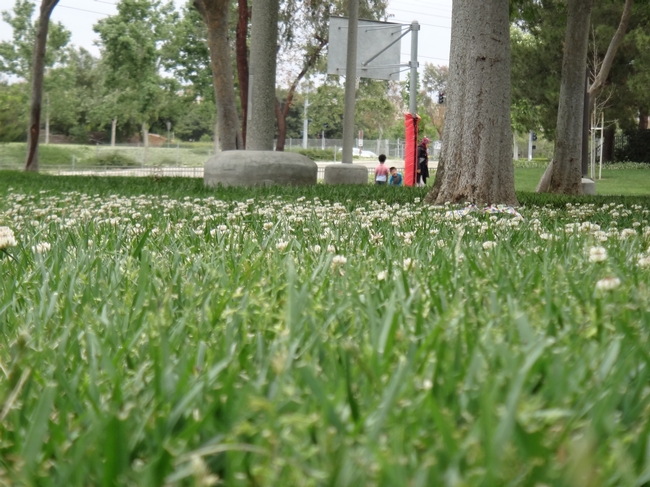In what has been dubbed “dandelion-gate,” members of the Washington State legislature spent 20 minutes complaining about weeds on the capital's lawn “In all the years I've been here I've never seen so many dandelions all over,” Sen. Mike Padden (R) said. “Is it your policy not to treat dandelions?” The department responsible for landscaping responded that the legislature cut its budget and now it only has 15 people covering the nearly 500 acre campus.
More and more, cities and public agencies are being asked to review and revise (and in some cases develop) their pesticide use policies. Often this change is requested by well-meaning members of the community after reading news articles and then becoming concerned about potential toxic effects of pesticides on children or the environment. In the case above, the grounds crew was also responding to requests from a public interest group that wanted them to reduce synthetic herbicide use and they were experimenting with natural and sustainable landscaping and organic weed control.
Integrated pest management (IPM) programs are just that – INTEGRATED. IPM programs combine or stack management approaches to balance the desired effect (e.g. higher crop yield, decreased plant damage, etc.) with cost of the desired goal and environmental impacts.
From the UC IPM “What is IPM”:
The most effective, long-term way to manage pests is by using a combination of methods that work better together than separately. Approaches for managing pests are often grouped in the following categories.
Biological control
Biological control is the use of natural enemies—predators, parasites, pathogens, and competitors—to control pests and their damage. Invertebrates, plant pathogens, nematodes, weeds, and vertebrates have many natural enemies.
Cultural controls
Cultural controls are practices that reduce pest establishment, reproduction, dispersal, and survival. For example, changing irrigation practices can reduce pest problems, since too much water can increase root disease and weeds.
Mechanical and physical controls
Mechanical and physical controls kill a pest directly, block pests out, or make the environment unsuitable for it. Traps for rodents are examples of mechanical control. Physical controls include mulches for weed management, steam sterilization of the soil for disease management, or barriers such as screens to keep birds or insects out.
Chemical control
Chemical control is the use of pesticides. In IPM, pesticides are used only when needed and in combination with other approaches for more effective, long-term control. Pesticides are selected and applied in a way that minimizes their possible harm to people, nontarget organisms, and the environment. With IPM you'll use the most selective pesticide that will do the job and be the safest for other organisms and for air, soil, and water quality; use pesticides in bait stations rather than sprays; or spot-spray a few weeds instead of an entire area.
Another component to an IPM Program is the use of guidelines or thresholds to make a decision about when a management action is needed. This threshold must be realistic and in landscape and turf management is often set by the budget. So while a parent may want to see a beautiful weed-free lawn as they enter a school, a local decision about not using an herbicide would make it infeasible because the alternatives would require additional mowing, trimming, and hand weeding. This in turn, would require much more grounds staff time than what the budget would allow. Increasing the grounds budget is not helpful because that would take away funds from the core mission of the school.
So what to do? When the chemical component of an IPM program is no longer an option and weed management must rely on physical and mechanical methods something's got to give. And that thing is a change is attitude or expectations of what the site should look like. In the long run, that will become the new normal.
